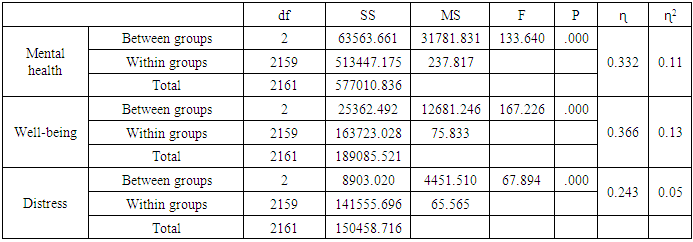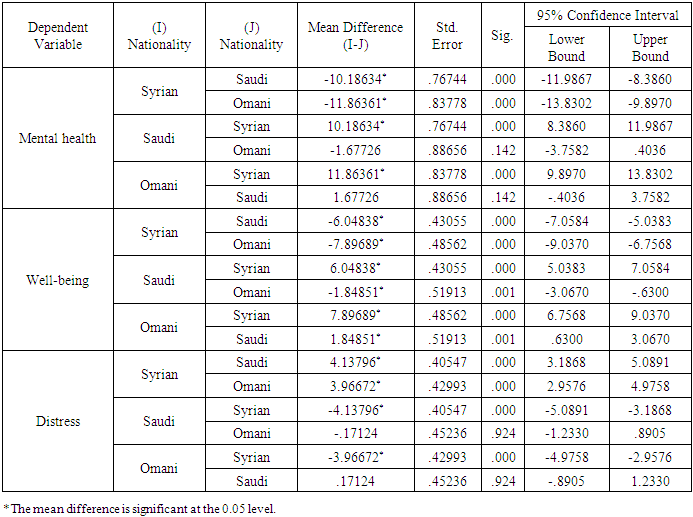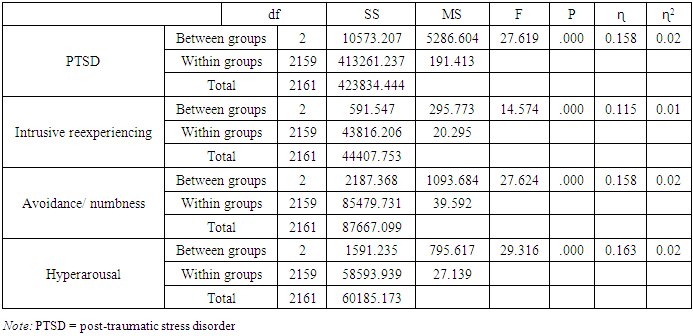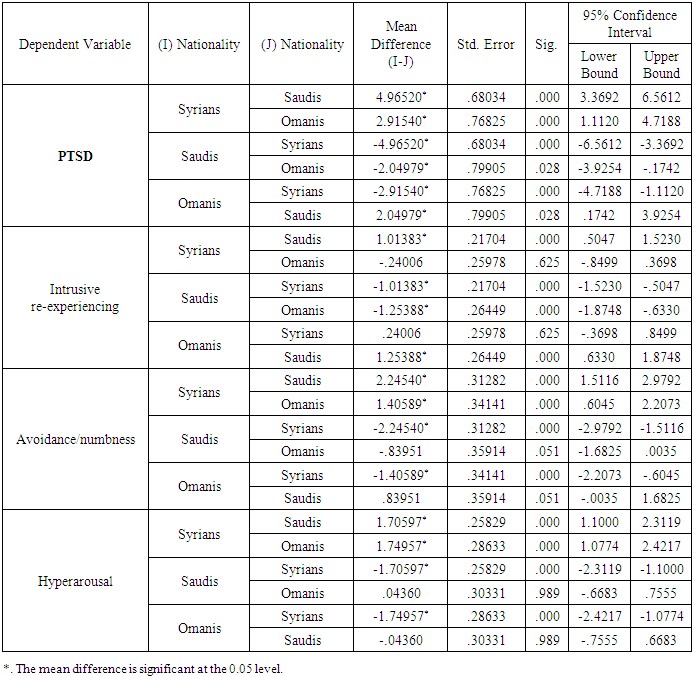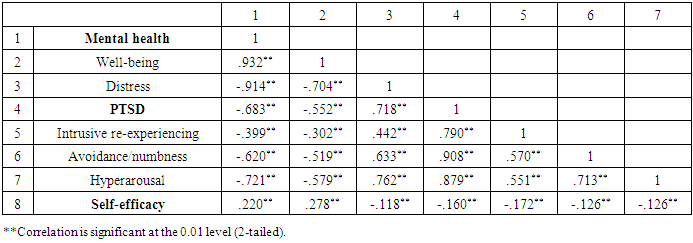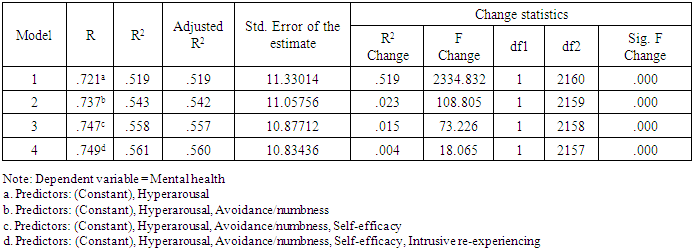| [1] | Krešimir, Ŭ., Popoviü, S., Šarlija, M., and Kesedžiü, I., 2020, Impact of human disasters and COVID-19 pandemic on mental health: potential of digital psychiatry., Psychiatria Danubina, 32(1), 25-31. |
| [2] | Jelinek, L., Moritz, S., Miegel, F., and Voderholzer, U., 2021, Obsessive-compulsive disorder during COVID-19: Turning a problem into an opportunity? J. Anx. Dis., 77, 102329. |
| [3] | Bagus, P., and Peña-Ramos, J., 2021, COVID-19 and the political economy of mass hysteria, Int. J. Environ. Res. Public Health, 18(1376). |
| [4] | Serafini, G., Parmigiani, B., Amerio, A., Aguglia, A., and Amore, M., 2020. The psychological impact of COVID-19 on the mental health in the general population, QJM - Mon J Assoc Physicians, 113(8), 531–537. |
| [5] | Li, Z., Ge, J., Yang, M., Feng, J., Qiao, M., Jiang, R., Bi, J., Zhan, G., Xu, X., Wang, L., Zhou, Q., Zhou, C., Pan, Y., Liu, S., Zhang, H., Yang, Y., Zhu, B., Hu, Y., Hashimoto, K., Jia, Y., Wang, H., W, R., Wang, R., Liu, C., and Yang, C., 2020. Vicarious traumatization in the general public, members, and non-members of medical teams aiding in COVID-19 control, Brain Behav Immun, 88, 916–919. |
| [6] | Moukaddam, N., and Shah, S., 2020. Psychiatrists beware! the impact of COVID-19 and pandemics on mental health, Psychiatr Times, 37(3), 11–12. |
| [7] | Bueno-Notivo, J., Gracia-García, P., Olaya, B., Lasheras, I., López-Antón, R., and Santabárbara, J., 2020. Prevalence of depression during the COVID-19 outbreak: A meta-analysis of community-based studies, Int J Clin Health Psychol, 21(1), 100196. |
| [8] | Mariani, R., Renzi, A., Di Trani, M., Trabucchi, G., Danskin, K. and Tambelli, R., 2020. The impact of coping strategies and perceived family support on depressive and anxious symptomatology during the coronavirus pandemic (COVID-19) lockdown, Front Psychiatr, 11, 587724. |
| [9] | Tahara, M., Mashizume, Y., and Takahashi, K., 2021. Coping mechanisms: Exploring strategies utilized by Japanese healthcare workers to reduce stress and improve mental health during the COVID-19 pandemic, Int. J. Environ. Res. Public Health, 18(1), 131. |
| [10] | Dubey, S., Biswas, P., Ghosh, R., Chatterjee, S., Chatterjee, S., Dubey, M. J., Lahiri, D., and Lavie, C. J., 2020. Psychosocial impact of COVID-19, Diabetes Metab Syndr, 14(5), 779–788. [Advance online publication]. |
| [11] | Mukhtar, S., 2020. Mental health and psychosocial aspects of coronavirus outbreak in Pakistan: Psychological intervention for public mental health crisis, Asian J Psychiatr, 51, 102069. [Advance online publication]. |
| [12] | Black Dog Institute, 2020. Mental Health Ramifications of COVID-19: The Australian context. |
| [13] | Ornell, F., Halpern, S., Kessler, F., and Narvaez, J., 2020. The impact of the COVID-19 pandemic on the mental health of healthcare professionals, Cad Saudi Publica, 36(4), e00063520. |
| [14] | Yao, H., Jian-Hua, C., and Ye-Fing, X., 2020. Patients with mental health disorders in the COVID-19 epidemic, Correspondence, 7(4), 21. |
| [15] | Bandura, A., 1977. Self-efficacy: Toward a unifying theory of behavioral change, Psychol Rev, 84(2), 191–215. |
| [16] | Schwarzer, R. and M. Jerusalem, 1993. Measurement of Perceived Self-Efficacy: Psychometric Scales for Cross-Cultural Research, Freie University, Berlin. |
| [17] | Luszczynska, A., and Schwarzer, R., 2005. The role of self-efficacy in health self-regulation, In The adaptive self: Personal continuity and intentional self-development, Hogrefe & Huber Publishers, Göttingen, Germany, p. 137–152. |
| [18] | Hernández-Padilla, J. M., Ruiz-Fernández, M. D., Dobarrio-Sanz, I., López-Rodríguez, M. M., Fernández-Medina, I. M., Correa-Casado, M., and Fernández-Sola, C., 2020. Design and psychometric analysis of the COVID-19 prevention, recognition and home-management self-efficacy scale, Int. J. Environ. Res. Public Health, 17(13), 4653. |
| [19] | Yıldırım, M. and A. Güler, 2020. COVID-19 severity, self-efficacy, knowledge, preventive behaviors, and mental health in Turkey, Death Studies, 16 July. |
| [20] | Ritchie, L., Cervone, D., and Sharpe, B., 2021. Goals and self-efficacy beliefs during the initial COVID-19 lockdown: A mixed methods analysis, Front Psychol, 11, 559114. |
| [21] | American Psychiatric Association. (2021) What Is Posttraumatic Stress Disorder? [Online]. Available: https://www.psychiatry.org/patients-families/ptsd/what-is-ptsd. |
| [22] | Tucker, R., and C. S. Czapla, 2021. Post-COVID stress disorder: Another emerging consequence of the global pandemic. [Online]. Available: http://33h.co/kw3mb. |
| [23] | Ghebreyesus, T. A., 2020. Addressing mental health needs: an integral part of COVID-19 response, World Psychiatry, 19(2), 129–130. |
| [24] | Song, M., 2020. Psychological stress responses to COVID-19 and adaptive strategies in China, World Dev, 136, 105107. |
| [25] | van Tilburg, M. A. L., Edlynn, E., Maddaloni, M., van Kempen, K., Díaz-González de Ferris, M., and Thomas, J., 2020. High levels of stress due to the SARS-CoV-2 pandemic among parents of children with and without chronic conditions across the USA, Children, 7(10), 193. |
| [26] | Mowbray, H., 2020. In Beijing, coronavirus 2019-nCoV has created a siege mentality., Br Med J, 368. |
| [27] | Chamberlain, S., Grant, J., Trender, W., and Hellyer, A., 2021. Post-traumatic stress disorder symptoms in COVID-19 survivors: Online population survey, BJPsych Open, 7(2), E47. |
| [28] | Brewin, C. R., Gregory, J. D., Lipton, M., and Burge, N., 2010. Intrusive images in psychological disorders: Characteristics, neural mechanisms, and treatment implications, Psychol Rev, 117(1), 210–232. |
| [29] | Alshehri, F., Alatawi, Y., Alghamdi, B., Alhifany, B. and Alharbi, A., 2020. Prevalence of post-traumatic stress disorder during the COVID-19 pandemic in Saudi Arabia, Saudi Pharm J, 28(12), 1666–1673. |
| [30] | Arakelyan, H. S., 2020. Coronavirus infection, stress, anxiety and breathing. [Online]. Available: http://33h.co/kw3m2. |
| [31] | Shah, K., Kamrai, D., Mekala, H. M., Mann, B., Desai, K., and Patel, R. S., 2020. Focus on mental health during the coronavirus (COVID-19) pandemic: Applying learnings from the past outbreaks, Cureus, 12(3), e7405. |
| [32] | Bashirian, S., Jenabi, E., Khazaei, S., Barati, M., Karimi-Shahanjarini, A., Zareian, S., Rezapur-Shahkolai, F., and Moeini, B., 2020. Factors associated with preventive behaviours of COVID-19 among hospital staff in Iran in 2020: An application of the Protection Motivation Theory, J Hosp Infect, 105, 430–433. |
| [33] | Luo, M., Guo, L., Yu, M., Jiang, W., and Wang, H., 2020. The psychological and mental impact of coronavirus disease 2019 (COVID-19) on medical staff and general public – A systematic review and meta-analysis, Psychiatr Res, 291, 113190. [Advance online publication]. |
| [34] | Yeen, H., and Ning, Z., 2020. Generalized anxiety disorder, depressive symptoms and sleep quality during COVID-19 epidemic in China: a web-based cross-sectional survey, medRxiv, Preprinted Article. |
| [35] | Resni, T. R., and Kalai, V. M., 2020. Mental health among people in high and low affected pandemic area during lockdown, Int J Indian Psychol, 8(2), 109–117. |
| [36] | K. Hemphill, 2020, 18TH ANNUAL SPFC RESEARCH CONFERENCE, in Considering resilience practices through Coronavirus: The role of having a healthy diet, 2020. Available: https://digitalcommons.spu.edu/cgi/viewcontent.cgi?article=1181&context=spfc_research_conference. |
| [37] | Lunn, P. D., Belton, C. A., Lavin, C., and McGowan, F., 2020. Using behavioral science to help fight the Coronavirus, J Behav Public Adm, 3(1), 1–15. |
| [38] | Pragholapati, A. 2020. Self-efficacy of nurses during the pandemic Covid-19. [Online]. Available: https://d1wqtxts1xzle7.cloudfront.net/63305323/Self-efficacy_of_Nurses_during_the_Pandemic_COVID- 1920200514-56521-hcrzzn.pdf?1589443477=&response-content-disposition=inline%3B+filename %3DSelf_Efficacy_Of_Nurses_During_The_Pande.pdf&Expires=1597005970&Sign. |
| [39] | Coggon, D., Rose, G., and Barker, D., 2003, Epidemiology for the uninitiated, Bmj Publishing Group. |
| [40] | Heubeck, B., and Neil, J., 2000. Confirmatory factor analysis and reliability of the Mental Health Inventory for Australian Adolescents, Psychol Rep, 87(2), 431–440. |
| [41] | Mutair, A. A., Mohaini, M. A., Fernandez, R., Moxham, L., Lapkin, S., and Ham-Baloyi, W. T., 2018. Psychometric testing of the mental health inventory in an Arabian context: Cross-cultural validation study, Nursing open, 5(3), 376–383. |
| [42] | Santos, A., and Novo, R. F., 2020. Mental Health Inventory: Sensitivity and specificity of the Portuguese version of the MHI-38 and MHI-5, Psychol Rep, 123(4), 1452–1469. |
| [43] | Khan, M. J., Hanif, R., and Naeem, T., 2015. Translation and validation of Mental Health Inventory, Pak J Psychol Res, 30(1), 56–79. |
| [44] | Liang, J., Wu, S., Krause, N. M., and Chiang, T., 1992. The structure of the Mental Health Inventory among Chinese in Taiwan, Med Care, 30(8), 659–676. |
| [45] | Meybodi, F., Saeedi, Z., Behjatia, Z., Noorbala, F., Dastbaravardec, A., and Enjedany, E., 2011. Reliability and validity of a Farsi version of 18- item Mental Health, Procedia Soc Behav Sci, 30, 1425–1429. |
| [46] | Davidson, J. R. T., Book, S., Colket, J., Tupler, L., Roth, S., David, D., Hertzberg, M., Mellman, T., Beckham, J. C., Smith, R., Davison, R. M., Katz, R., and Feldman, M., 1997. Assessment of a new self-rating scale for post-traumatic stress disorder, Psychol Med, 27(1), 153–160. |
| [47] | Davidson, J. R., Tharwani, H. M., and Connor, K. M., 2002. Davidson Trauma Scale (DTS): Normative scores in the general population and effect sizes in placebo-controlled SSRI trials, Depress Anxiety, 15(2), 75–78. |
| [48] | Meltzer-Brody, S., Churchill, E., and Davidson, J. R., 1999. Derivation of the SPAN, a brief diagnostic screening test for posttraumatic stress disorder, Psychiatr Res, 88(1), 63–70. |
| [49] | McDonald, S. D., Beckham, J. C., Morey, R. A., and Calhoun, P. S., 2009. The validity and diagnostic efficiency of the Davidson Trauma Scale in military veterans who have served since September 11th, 2001, J Anxiety Discords, 23(2), 247–255. |
| [50] | Rudwan, S. J., 1997. Self-efficacy - theoretical construction and measurement, J Soc Affairs, 14(55), 25–51. |
| [51] | Rudwan, S. J., 2010. The effect of self-efficacy in reducing anxiety, Psychological studies, 1(3), 9–33. |
| [52] | Shawwa, A., 2016. The self-efficiency and its relationship with psychological pressures that faces the security bodies in the Palestinian security institutions," An-Najah University Journal for Research (Humanities), 30(8), 1555–1587. |
| [53] | Alshafiee, I., 2005. Self-efficacy in relation to teaching efficacy, educational beliefs and job stress for teachers and student teachers in KSA, Educ J, 19(75), 131–193. |
| [54] | Yacob, N., 2012. Self-efficacy and its relation to achievement motivation and academic achievement among King Khalid University Colleges Students in Bisha (Kingdom of Saudi Arabia), J Psychol Educ Sci, 13(3), 71–98. |
| [55] | Alrwahi, B.,2019. “Occupational adjustment and its correlation with perceived self-efficacy among a sample of employees at the directorate general of education in Al-Dakhlyia Governorate,” Master's thesis, University of Nizwa. Oman October. |
| [56] | Alredni, A., 2017. “The impact of teacher motivation and self-efficacy on mental health,” Master's thesis, University of Nizwa, Oman, February. |
| [57] | Alshuaibi, M., and Aldhafri, S., 2020. The relationship of emotional intelligence to the collective efficacy beliefs among mathematics teachers in the Sultanate of Oman," Jordan J Educ Sci, 1(16), 33–43. |
| [58] | World Health Organization, Mental health and psychosocial considerations during the COVID-19, World Health Organization, 2020. Available: https://apps.who.int/iris/handle/10665/331490?locale-attribute=ar&locale-=. |
| [59] | Arezki, R., Yuting, R. F., and Ngyuen, H., 2020. Coping with a dual shock: A perspective from the Middle East and North Africa in COVID-19 in Developing Economies, CEPR Press, London, pp. 69-85. |
| [60] | Al Ain News., 2020. For cemeteries that are truer than the official data ... the Corona mystery in Syria. |
| [61] | Restauri, N., and Sheridan, A. D., 2020. Burnout and posttraumatic stress disorder in the Coronavirus Disease 2019 (COVID-19) pandemic: Intersection, impact, and interventions," J Am Coll Radiol, 17(7), 921–926. |
| [62] | Satpathy, B., and Ali, E., 2020. A study on psychological well-being of final year management students during COVID-19 pandemic lockdown in India, Int J Indian Psychol, 8(2), 1–25. |
| [63] | Vishnupriya, S., and Sudarsan, A., 2020. Psychological distress and perceived social support among young adults during COVID-19, Int J Indian Psychol, 8(2), 26–31. |
| [64] | Kirthiga, H. J., 2020. Influence on resilience and death anxiety during COVID-19 lockdown for Indians and foreigners, Int J Indian Psychol, 8(2), 93–103. |
| [65] | Ostroff, J. S., Woolverton, K., Berry, C., and Lesko, L., 1996. Use of the Mental Health Inventory with adolescents: A secondary analysis of the Rand Health Insurance Study, Psychol Assess, 8(1), 105–107. |
| [66] | Statisticssolutions.com, 2020. [Online]. Available: https://www.statisticssolutions.com. |
| [67] | Wikipedia, 2020. Template: COVID-19 pandemic data [Online]. Available: https://en.wikipedia.org/wiki/Template:COVID-19_pandemic_data. |
| [68] | BC Centre for Disease Control, 2020. COVID19-Psychosocial-Supports. [Online]. Available: http://www.bccdc.ca/Health-Professionals-Site/Documents/COVID19-Psychosocial-Supports-HCW.pdf. |
| [69] | Mental Health America, 2020. Mental health and COVID-19 information and resources. [Online]. Available: https://mhanational.org/covid19. |
| [70] | Rogers, R. W., 1975. A protection motivation theory of fear appeals and attitude change, J Psychol, 91(1), 93–114. |
| [71] | Veit, C., and Ware, J., 1983. The structure of psychological distress and well-being in general, J Consult Clin Psychol, 51(5), 730–742. |
| [72] | Lani. J., 2010. Mental Health Inventory (MHI). [Online]. Available: https://www.statisticssolutions.com/wp-content/uploads/kalins-pdf/singles/mental-health-inventory-mhi.pdf. |
| [73] | Wilder-Smith, A., Chiew, C. J., and Le, V. J., 2020. Can we contain the COVID-19 outbreak with the same measures as for SARS? Lancet, 20(5), 102–107. |
| [74] | Department of Psychiatry, 2020. Posttraumatic stress disorder during COVID-19. [Online]. Available: http://33h.co/kw3ac. |
| [75] | Fardin, M. A., 2020. COVID-19 and anxiety: A review of psychological impacts of infectious disease outbreaks, Arch Clin Infect Dis. [In Press]. |
| [76] | Centres for Disease Control and Prevention, 2020. Centres for Disease Control and Prevention. [Online]. Available: https://www.cdc.gov/coronavirus/2019-ncov/daily-life-coping/managing-stress-anxiety.html. |
| [77] | National Center for Psychiatry, 2020. Effects of the Coronavirus (COVID-19) Pandemic on PTSD [Online]. Available: https://www.ptsd.va.gov/covid/COVID_effects_ptsd.asp. |
| [78] | Singh, S., and Khokhar, A., 2020. Prevalence of posttraumatic stress disorder and depression in general population in India during COVID-19 pandemic home quarantine, Asia Pac J Public Health, 33198479. |
| [79] | Kumar, R., 2011, Research Methodology: A Step-by-Step Guide for Beginners, SAGE-Publications, London. |
| [80] | World Health Organization, 2020. COVID-19 disrupting mental health services in most countries, WHO survey. [Online]. Available: http://33h.co/kw3bb. |
| [81] | Floyd, D. L., Prentice-Dunn, S., and Rogers, R. W., 2000. A meta-analysis of research on protection motivation theory, J App Soc Psychol, 30(2), 407–429. |
| [82] | World Health Organization, 2020. Coronavirus disease (COVID-19) situation reports. [Online]. Available: https://www.who.int/emergencies/diseases/novel-coronavirus-2019/situation-reports. |
| [83] | Knolle, F., Ronan, L., and Murray, G. K., 2021. The impact of the COVID-19 pandemic on mental health in the general population: a comparison between Germany and the UK, BMC Psychol, 9(60), 1–17. |



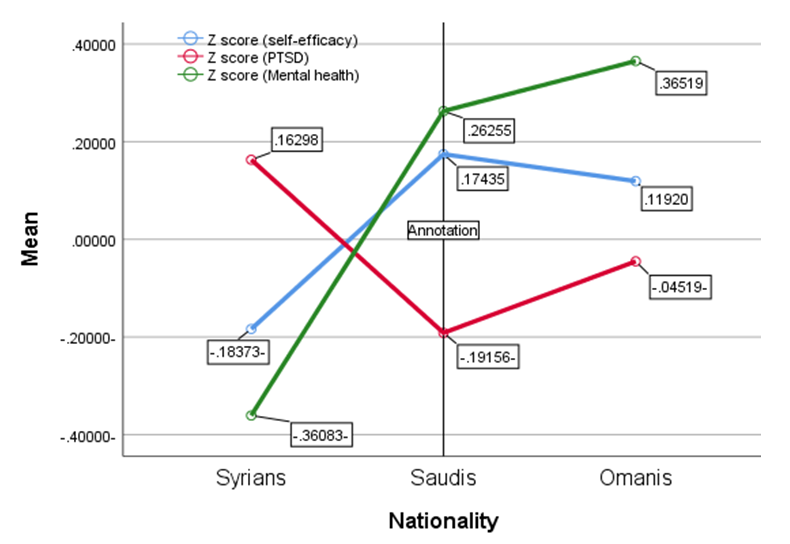
 Abstract
Abstract Reference
Reference Full-Text PDF
Full-Text PDF Full-text HTML
Full-text HTML